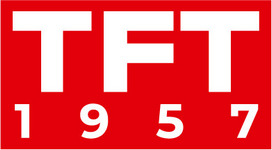-
Unreal Engine adds support for SMPTE ST 2110
-
MainConcept Integrates VVC and LCEVC into its OTT Encoder
-
Kinefinity launches KineOS 7.2 with extended Pre-roll
Hosts: Philip Grossman, host and co-producer at Visionaries; Mary Ann Seidler, owner of First Light Media and consultant for multiCAM Systems and Telos Alliance; and Maria Kholodova.
Maria: Unreal Engine 5.3 introduces experimental SMPTE ST 2110 support, enhancing LED stage configurations. This update, focusing on NVIDIA hardware, boosts virtual production with higher resolution displays and efficient hardware use. It promises lower latency and improved multi-camera shooting capabilities, revolutionizing ICVFX stages with advanced scene geometry and lighting.
So, Mary, I know you’re an audio expert, but I know you were curious about this.
Mary: Yeah, I’m always excited to see another company implementing 2110. I think we all expected this whole movement with 2110 to be adopted really quickly, but it hasn’t; it takes time. And Philip, you were just talking about 2110-40, so can you tell me a little bit more about that and how this relates to it?
Philip: Yeah, it’s quite interesting. I’m glad to see that they’re adopting it, especially in VFX and ICVFX, like the Unreal Engine. On these stages, they need to know the camera’s position in space, its lens, focal length, and aperture to adjust the scenery accordingly. The interesting part about SMPTE 2110, specifically -40, which handles the ancillary data, is its openness. Previously, ancillary data was mostly just messages, like closed captioning. Now, there’s potential to use this for passing extended data from cameras into the system, making ICVFX more integrated. I’m glad to see its adoption. NVIDIA’s acquisition of Mellanox has driven some of this, which is great. It simplifies the setup, so it’ll be interesting to see how this evolves in television. A lot of ICVFX has been in the film world, but now we might see more of it in TV.
Maria: MainConcept’s Live Encoder 3.4 now features advanced VVC and LCEVC codecs, elevating live streaming capabilities. This update supports various formats including MP4 and MPEG-2 TS, and is tailored for MPEG-DASH and SRT. It enables high-resolution broadcasting, including 8K, setting a new standard in live broadcast technology.
Mary, I’m throwing it back to you again.
Mary: I just love compression. Isn’t it fun? And we were talking earlier about how much progress has been made. So, Philip, what are your opinions about this? You started out many years ago when we saw basic video and audio compression.
Philip: I think what’s interesting about this is that, first of all, most people don’t realize that only a handful of companies make the codecs themselves. Adobe doesn’t make them, nor does DaVinci Resolve; they utilize them. We used them when I was at Imagine, and MainConcept is one of the bigger ones. So, when someone says, ‘I wish Adobe would render something faster,’ it’s not really Adobe; it’s MainConcept and what they’re doing. As you mentioned, it’s interesting to see the continual advancements in the various codecs. I distinctly remember seeing, I think it was at IBC in 2015 or 2016, a demonstration at Harmonic’s booth showing the original MPEG-2 codec that they developed. Ten years later, the advanced version of it showed a marked difference in quality. So, the fact that MainConcept is updating their codec, expanding it, and hopefully adopting the new AI engines or media engines that are in the latest chipsets will speed things up, making it very interesting. I hope others follow along, and obviously, MainConcept, being one of the larger manufacturers of codecs, is a good sign for the industry.
Maria: Kinefinity’s latest firmware, KineOS 7.2, brings significant upgrades to MAVO Edge and mark2 cameras. Key features include an extended Pre-roll function for capturing crucial moments, active E-mount for broader lens compatibility, and ExFAT support for improved file management. The update also streamlines workflow with faster startup, easy clip deletion, and comprehensive bug fixes. So, Philip, tell us about this.
Philip: Kinefinity is sort of that scrappy startup, the underdog that’s been making a name in the cinema camera industry for quite some time. It’s interesting to see their developments. One thing this shows is that modern cinema cameras are effectively computers with sensors, given the additional functionality and features they’re able to incorporate with their latest OS update. It’s exciting. I do question their choice of various mounts, which is a common debate among cinematographers regarding the best camera mount. However, it’s good to see competition, especially in the sub-$5,000 range for what is effectively a cinema camera that produces high-quality images. I’m glad to see them continuously improving their technology and capabilities.
Maria: That’s all the time we have today. Many thanks to our expert – Philip and Mary. And don’t forget to comment on the news we’ve discussed. See you next Monday at the same time!
The live broadcast took place on November 28, 2023. Production – TKT1957 LLC.
Media Partner – Cine Gear Expo.
360 Seconds. Broadcast News & Commentary
The weekly show, focusing on the latest products and solutions in the global TV and film industry, features insights and analysis from top experts. Released every Monday within the TKT1957 network, the program can be found on the YouTube channel, social media groups, and the tkt1957.com website. Engage with the content, view the episodes, and participate in the conversation by leaving your questions in the comments section.
The program can be watched every Monday at 20:00 UTC+4 by clicking on any of these links:









